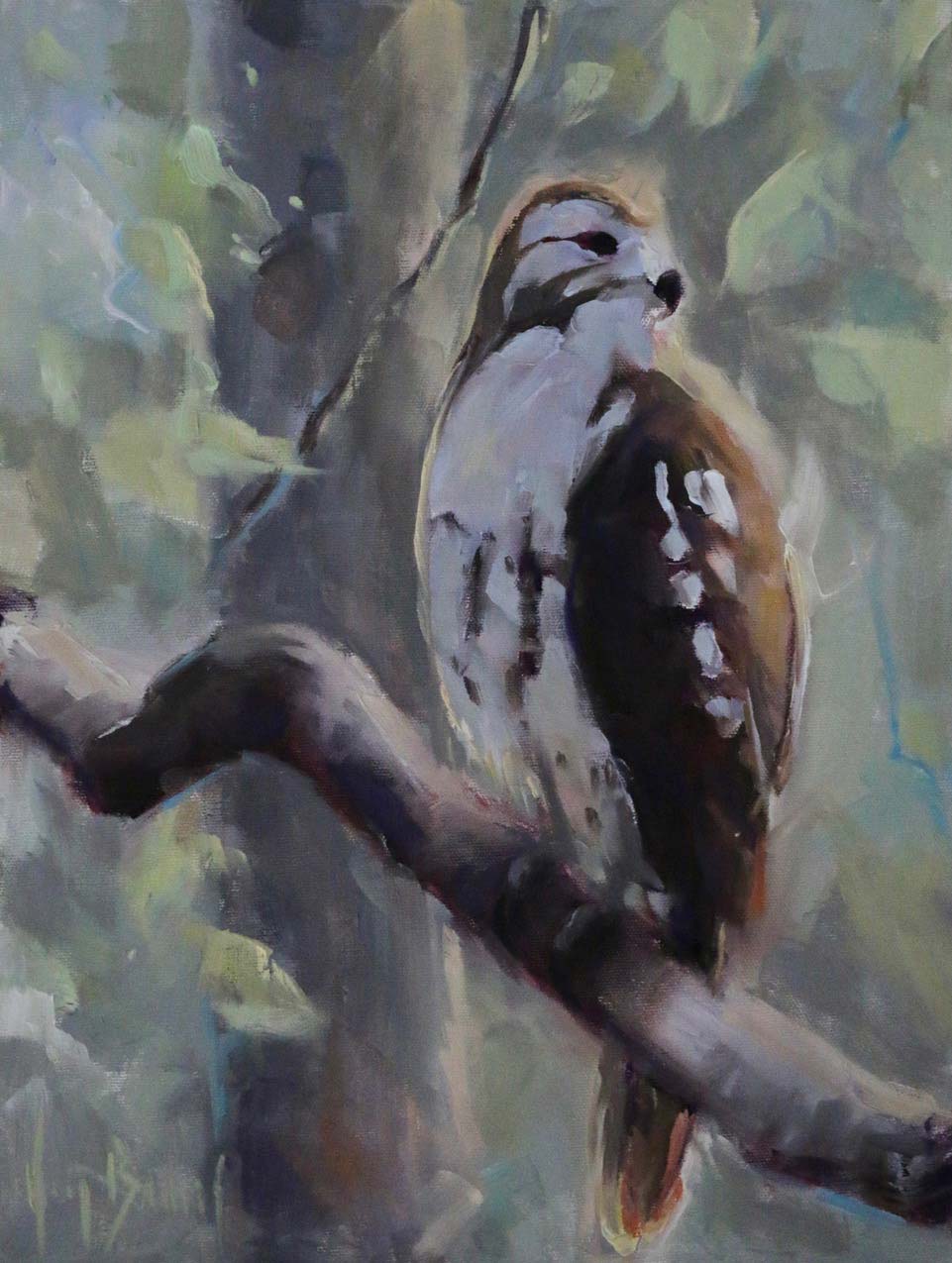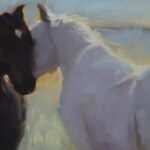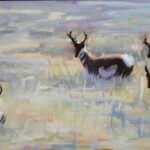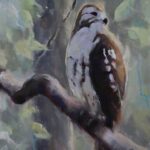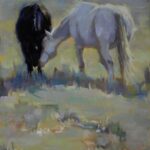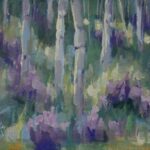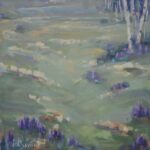
Brush Daily
Brushwork is one of the most talked about skills among painters hoping to add a unique signature to their paintings. American Master, Quong Ho said “Brushwork trumps everything.” Color and brushwork are the sirens of the canvas, luring the viewer into a painting. No wonder students seek to develop the ability to weld such powers. But as noted by many, color and brushwork are like clothing and jewels on the body of a painting. Without a killer figure (made from the bones up), the drape and adornment will not carry the beauty. Brushwork can become simply technique, ridiculed like costume jewelry. Color also, can be reduced to fashion, fleeting like lust. The real strength lies in solid composition and correct use of value (topics to tackle in future blogs).
Even so, beautiful brushwork is sought after by most students. The question “what kind of brushes do you use?” comes up often. Large questioning eyes, upturned faces, notebooks open with pens poised wait for an answer, ready for The Secret to be revealed. The longed for answer to what-magical-brush I use to make that brushstroke hangs in the air. But before I confess let’s take a short hike through the forest of brushes.
Square or Curvy?
There are a variety of sizes and shapes of brushes with rounds, filberts and flats being the most well known. Note: there are many other ways to put paint on a canvas, including palette knives, foam paddles, fingers (warning: health hazard alert) but you will have to find someone else to explain those options. I have always been wary of sharp things and greasy fingers, though I must admit paddles have turned my head…but I digress….Other types of brushes like fan brushes exist, but remember the technique-ish thing? Yes, fan brushes immediately bring up that issue.
Rounds are the least clever choice of brush in my view. Any decent filbert can turn on it’s side and become a round then return to a filbert in a snap. Filberts have an arced tip which makes a distinctive mark on the canvas. Sorry round brushes you are just sooo one-dimensional. Flats have a squared tip and come in two sizes, short bristles called Brights and long bristles called simply Flats. The squared edge works well for control freaks (me in another life); Brights being the brush of choice for nervous painters. Since I am a recovered neurotic having “let go” of my former false painter self, I use only the long flats.
Swine vs. Silk
The bristles on the brush matter too. Generally they come in two categories of texture. Boar hair brushes are stiff (are you surprised?) that rake through heavy passages of paint leaving a trail of grooves with each stroke. This allows light to flow around the molecules of pigment suspended in the oil paints with luminous results. Doesn’t that sound lovely? This works great for artists that paint direct and thickly. That would be me. Yum.
Sable is the other most noteworthy bristle. These feel as silky and soft as the name implies. Sables are great for washes and glazing and giving a smooth soft surface from their brushstrokes.
Both types of bristle brushes come in a natural and synthetic form. Synthetic has two advantages. First, no harm came to any animal in the making of the brushes. I cringe thinking about how real bristles might have been attained. Ouch or worse. Second, if you are using water soluble oils, they will keep their shape, while natural fibers will poof like a curly haired child on a humid day.
Give It a Swish
Of course more important than which brush I prefer, is which brush each individual artist prefers. I am a huge advocate of the how-happy-does-this-make-you-feel? school of teaching. It is far more important to find a brush that speaks to you and then practicing with it a lot. Head over to your local art supply store and meet your new brushes in person. Getting really good at handling one brush that really sings in your hand will serve you better than a large collection of various types of brushes. Simplicity is a wonderful thing. I have become so versatile in the my brush work that often I am almost finished with a painting using only one or maybe two brushes. Rarely do I use more than three total. And a nice perk is less to clean up. More in the simple-is-good category.
Since I use water soluble oils, I use synthetic brushes. Quality in brushes (and in everything else really) is non-negotiable for me. Invest in your brushes then take careful care of these magical wands. Master’s Soap is excellent for cleaning and restoring hard working and sometimes abused brushes (yes I have forgotten to clean them a very few times). Brushes and cleaner can be found at my favorite art stores Plaza Art (Tennessee) and Meininger (Colorado).
So finally…wait for it…my favorite brands:
Stiff Boar-like bristles:
Princeton 6300 series
Rosemary Synthetics
Contact www.claudiawilliams.com claudiawilliamsart@icloud.com or Facebook page Claudia Williams Studio
Artisan by Windsor Newton
Soft Sable-like bristles:
Monarch
Also, since the brushes I like to use really are magical to me (after 10,000 hours of practice) I like to get the longest handle I can. I am no Hogwart’s grad, but I do believe my brushes are loyal to me, though this artist picked the wand. Good luck!



